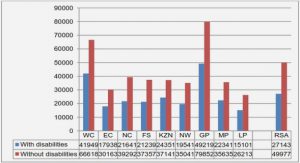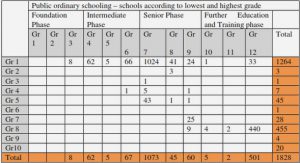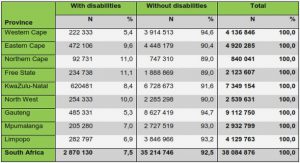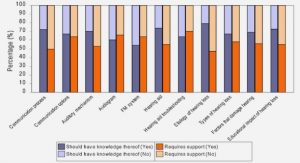Get Complete Project Material File(s) Now! »
Wnt/Fz/Rho: the Morphogenetic module
In chordates the Wnt/Fz/Rho module has been shown to regulate different morphogenetic movements in the embryo, notably convergent extension in the so-called Keller explants. The Keller explant is a piece of tissue including dorsal mesoderm and neural ectoderm from Xenopus early gastrula embryo. Two explants derived from two different embryos are cultured together. In wild type condition the neural ectoderm and the dorsal mesoderm undergo convergent extension (narrowing and elongating) forming a stereotyped morphology with two different domains (an elongated domain and a collar region interface). Keller explants are used to characterise the function of conserved heterologous proteins during gastrulation. Using this technique, it was shown that Nematostella Wnt5 and Wnt11 proteins impair convergent extension in Xenopus Keller explants (Rigo-Watermeier et al. 2012). Ectopic expression of Nematostella Wnt5 and Wnt11 induce opposite phenotypes. Wnt5 overexpression induces the formation of explants with a more elongating domain compared to the stereotyped morphology, whereas Wnt11 overexpression caused shorter explants, suggesting that these ligands affect cell convergent extension movements differently. It is not clear if Wnt5 and Wnt11 affect the establishment of the mesodermal cell polarity directly. Interestingly the overexpression of these two genes in Xenopus ventral blastomeres at the four-cell stage does not produce a secondary axis, unlike Nematostella Wnt1 overexpression. This suggests that Wnt5 and Wnt11 do not trigger the Wnt/β-catenin dependent pathway and that a β-catenin independent pathway was already present in the last common metazoan ancestor.
Developmental roles of Wnt/β- catenin pathway: Germ layers and body axis
Wnt/β-catenin signalling is widely deployed during early embryonic development to regulate germ layer formation and body axis (Clevers 2006; Amerongen & Nusse 2009), suggesting ancestral and highly conserved roles of this pathway. Wnt pathway via β-catenin stabilisation leads to endoderm/endomesoderm specification. This process has been demonstrated in a wide range of phyla including cnidarians, echinoderm, hemichordates and ascidians (Logan et al. 1999; Imai et al. 2000; Wikramanayake et al. 2003; Darras et al. 2011; Hudson et al. 2013). Studies in the solitary ascidians Phallusia mammillata and Ciona intestinalis revealed that the fate choice between endoderm and mesoderm is mediated through a β-catenin binary ON-OFF switch (Hudson et al. 2013). Hyperactivation or downregulation in isolated blastomere can convert the fate choice. For example it was shown that if an isolated blastomere retains an ON β-catenin state from 8 to 32 cell stage it will have an endoderm fate while in a OFF state the cell will give rise to the ectoderm (Hudson et al. 2013).
More widely discussed is the role of β-catenin nuclearisation as the key step in the establishment of the antero-posterior axis during bilaterian embryogenesis and the oral-aboral axis in non-bilaterian animals (Petersen & Reddien 2009; Marlow et al. 2013). During gastrulation β-catenin nuclearisation occurs and specifies oral-aboral identity, at the posterior pole in bilateria and the oral pole in cnidarians (Figure 5A). This correlation suggests that regionalised nuclear localisation of the β-catenin to establish embryo polarity was already a feature of embryogenesis in the common ancestor of metazoans.
Wnt/β-catenin signalling and stem cell regulation
Wnt/β-catenin signalling not only specifies the anterior-posterior axis in many metazoan species (Petersen & Reddien 2009) but also has other developmental roles including the regulation of stem cell dynamics. Within different stem cell systems (e.g. hematopoietic, intestinal stem cell system), Wnt signalling has been found to act to maintain tissue cell homeostasis by the regulation of cell proliferation and differentiation, promoting lineage specification and maintaining a pluripotency state (Sokol 2011, Nusse et al. 2008).
One of the well-studied systems in which Wnt/β-catenin signalling controls cell homeostasis by regulating cell proliferation and differentiation is the mouse crypt-villus axis in the intestinal stem cell system. At the base of the villi are small invaginations termed crypts, which represent the functional unit of the intestinal epithelium. Stem cells of the crypt-villus system are located at the bottom of each crypt. These cells divide and produce transit-amplifying progenitors that will finally differentiate in the villus. In contrast Paneth cells, which are differentiated cells that control the intestinal microbial environment, are located below the stem cells. Wnt signalling can promote both the proliferation of the stem cell and the differentiation of the Paneth cells. In vivo studies using mouse transgenic lines showed that abolition of Wnt/β-catenin signalling has dramatic effects on the crypt compartments. Mice mutants lacking the transcription factor TCF4 show complete depletion of the crypt stem cells (Pinto et al. 2003), while the hyperactivation of Wnt/β-catenin promotes de novo formation of the Paneth cells (Andreu et al. 2008).
Wnt/β-catenin also controls neuronal lineage specification from neural crest cells. During the development of the vertebrate nervous system, neural crest cells generate peripheral nervous system neurons and several non-neural derivatives such as melanocytes (Dorsky et al. 2000). The activation of the β-catenin pathway in neural crest cells promotes neural fate specification, such that ablation of the β-catenin gene in mouse neural crest cells causes the loss of sensory cells and melanocytes (Hari et al. 2002). Conversely when β-catenin is constitutively activated the number of neural crest derivatives increases.
Going back to a stem cell system, Wnt/β-catenin signalling has been proposed to maintain self-renewal and pluripotency in mouse and human ES cells (Sato et al. 2004). The pharmacological hyperactivation of the Wnt/β-catenin pathway in ES cells promotes a state of pluripotency as suggested by morphological and molecular markers (i.e. increased levels of the pluripotent stem cell marker Oct3/4, as described in Introduction section 1.4).
The role of Wnt/β-catenin in stem cell regulation is not restricted to vertebrates. Studies on i-cells, in hydrozoans indicate that the Wnt/β-catenin pathway regulates the i-cells differentiation (Teo et al. 2006; Khalturin et al. 2007). In Hydra and in Hydractinia adult polyps, increasing Wnt/β-catenin signalling, via GSK3 inhibition induces ectopic differentiation of the nematocytes and nerve cells (only in Hydractinia). In Hydra the activation of Wnt/β-catenin, promotes the ectopic differentiation of the nematoblasts (see Introdution section 2.3.3). In Hydra activation of Wnt/β-catenin promotes the supernumerary differentiation of nematoblasts (see Introduction section 2.3.3). In Hydractinia nematogenesis is also stimulated, and it appears that pharmacological stabilisation of Wnt/β-catenin first causes a transient increase in proliferating cells as shown by BrdU labelling assays, followed by an increase in the number of differentiated nerve cells and nematocytes.
How are the functions of Wnt signalling in regulating body axis formation and maintenance, germ layer segregation, stem cell multipotency and fate commitment related and coordinated? This remains an important question to address.
Clytia embryogenesis and larval development
Clytia eggs are transparent and measure between 150 and 180 µm in diameter (Figure 8d). First cleavage is unipolar and occurs 50-60 minutes after fertilisation (Figure 9A). In hydrozoans the initiation site of the first cleavage coincides with the region of the egg that extruded the polar bodies (the animal pole), and later the site of cell ingression during gastrulation and the future oral pole of the larva (Freeman 1981a) (Figure 9A).
For experimental reproducibility we control the timing of developmental events in Clytia in the laboratory by maintaining a constant temperature (18-200C). During the first six hours of development at 18°C, a series of divisions, produces a single cell-layered blastula, covered by cilia for swimming, prior to the onset of gastrulation (Figure 9A). At 18°C Gastrulation starts, 10 hours post fertilization (hpf) by unipolar cell ingression at oral pole (Byrum 2001) (Figure 9A). Endodermal cells and Piwi/Nanos1 positive-i-cells ingress to enter the cavity of the gastrula. Therefore a mixed population of cells that can be found inside the gastrula. Some of these cells will contribute to the endoderm (i.e. FoxB expressing cells), while others are founders of the i-cell lineage. After 24hpf, gastrulation is complete and planula larva elongates along the oral-aboral axis (Figure 9A), but endoderm is still not differentiated. Except at the mid-gastrula stage, embryos and planulae show a strong ability to re-pattern along the oral-aboral axis; when cut into presumptive oral and aboral halves they are able to reform well-patterned mini-larvae (Freeman 1981b). At 48hpf, ectoderm and endoderm are fully formed and are separated by a thin acellular mesoglea (Figure 9A-B). The ectodermal cells are ciliated and ectodermal cilia are oriented along the oral-aboral axis to drive the directional swimming towards the aboral pole, (Momose et al. 2012). At 48hpf planula stage the ectodermal layer shows the presence of several differentiated cell types: nematocytes, nerve cells and gland cells. In contrast, the endoderm hosts a population of endodermal gland cells and the multipotent i-cells stem cells (Figure 9B).
Hydrozoan cell types
Hydrozoans possess a relatively limited number of cell types compared to bilaterian animals. Medusae and larvae share to a large extent the same cellular components that will be described in the next section. The hydrozoan planula possesses two germ layers, the endoderm comprising endodermal gland cells, and endodermal epithelial cells, and the ectoderm include ectodermal epithelial cells, nerve cells, nematocytes and gland cells.
I-cells are distinct from any germ layers and migrate between the two depending on stage and structure, but in larval stages are located among the endodermal cells.
I-cells: a hydrozoan multipotent stem cell system
I-cells are migratory cells without any particular morphological distinctive feature such as neural processes or polarised granules. They are capable of generating daughter cells with the same potential as the mother cells, have unlimited proliferation potential and are able to produce differentiated functional progenies. Therefore i-cells can clearly be considered to be a hydrozoan stem cell population. They have the particularity of being able to give rise to both somatic cell types and gametes (Figure 11A) (Bosch & David 1987; Bode 1996).
Table of contents :
GENERAL SUMMARY
INTRODUCTION
1) A GENERAL OVERVIEW OF STEM CELL FEATURES AND REGULATION
1.1 Stem cell properties
1.2 Stem cell potential
1.3 Generating cell type progenitors
1.3.1. Generating progenitors via unequal determinant segregation
1.3.2 Generating progenitors via environmental cues: the “Niche”
1.4 Maintaining the undifferentiated stem cell state
1.4.1 Transcriptional control
1.4.2 Epigenetic mechanisms
1.4.3 Regulatory RNAs
1.5 A shared gene toolkit for stem cells and germ line
1.5.2 Nanos regulates transcription and translation repression
1.6 Wnt signalling: a candidate for stem cell regulation
1.6.1 The Wnt/ β- catenin pathway
1.6.2 The Wnt/ Planar cell polarity pathway
1.6.3 Developmental roles of Wnt/β- catenin pathway: Germ layers and body axis
1.6.4 Wnt/β-catenin signalling and stem cell regulation
2) CNIDARIAN MODELS IN DEVELOPMENTAL BIOLOGY
2.1 Clytia life cycle and development
2.1.1 Clytia embryogenesis and larval development
2.1.2 Clytia medusa anatomy
2.2 Hydrozoan cell types
2.2.1 I-cells: a hydrozoan multipotent stem cell system
2.2.2 Nerve cells
2.2.3 Nematocytes
2.2.4 Gland cells
2.2.5 Gametes
2.2.6 Epithelial cells
2.3 I-cell dynamics
2.3.1 Analysis of i-cell multipotency
2.3.2 Generating i-cell progeny: I-cell derivatives specification and differentiation
2.3.3 Wnt signalling regulates i-cell differentiation
2.4 The embryological origin of i-cells
MATERIAL & METHODS
RESULTS I: MONITORING THE SPATIAL AND TEMPORAL DISTRIBUTION OF I-CELL DERIVATIVES DURING CLYTIA LARVAL DEVELOPMENT.
1.BACKGROUND AND QUESTIONS
1.1 Nematogenesis progression during Clytia larval development.
1.1.1 Distribution of nematocytes during embryonic development
1.1.2 Mcol3-4a-expressing nematoblasts are largely restricted to the endodermal region
1.1.3 Sox15 is expressed during an extended period of nematogenesis
1.2 Neurogenesis during larval development
1.2.1 Clytia Prdl-a as putative neuronal marker
1.2.3 Clytia Asc-b is a expressed in the endoderm in both planulae and medusae
1.2.4 Zic-C is expressed in a sub-type of neural cells specific to medusa tentacles.
1.2.5 Neuropeptide expression defines mature neural subpopulations
1.3 Gland cell formation in Clytia planulae and in the medusae
1.4 Germ cell genes in Clytia
RESULTS II: WNT/Β-CATENIN SIGNALLING IN EMBRYONIC PATTERNING, I-CELL FORMATION AND I-CELL DIFFERENTIATION DURING CLYTIA EMBRYIONIC AND LARVAL DEVELOPMENT
2. BACKGROUND AND QUESTIONS
2.1 PAPER 1: Summary of the results
2.1.1 Investigating Wnt/β-catenin signalling in i-cell formation and differentiation during Clytia embryonic
development.
PAPER 1: WNT SIGNALLING IN MULTIPOTENT STEM CELL FORMATION AND DIFFERENTIATION IN CLYTIA
HEMISPHAERICA LARVAL DEVELOPMENT
2.2 PAPER 2: Summary of the Results
2.2.1 Identification of novel Clytia embryos patterning genes
2.2.2 Polarized expression pattern of Wnt3 target genes
2.2.3 IE genes show an i-cell like expression pattern
2.2.4 Different responses of Wnt3-MO responsive genes to Fz1-MO
PAPER 2: DIFFERENTIAL RESPONSES TO WNT AND PCP DISRUPTION PREDICT EXPRESSION AND DEVELOPMENTAL FUNCTION OF CONSERVED AND NOVEL GENES IN A CNIDARIAN.
2.3 Additional Results: Characterisation of putative novel i-cell genes under-expressed in Wnt3
morphant early gastrulae.
DISCUSSION & PERSPECTIVES
ANNEXE 1: COMPARISON OF EXPRESSION LEVELS OF SELECTED HYDRA GENES IN SEPARATED CELL
POPULATIONS
BIBLIOGRAPHY




